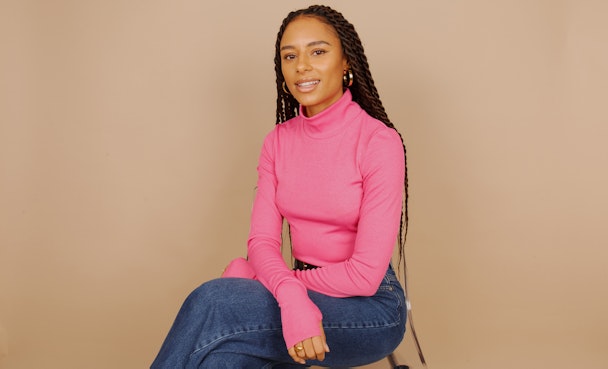There’s an influencer pay gap problem – and marketers can fix it
Influencer marketing saw a huge influx of investment in the early months of the pandemic. But the people that fuel the sector – the influencers themselves – often aren’t treated fairly. Charlotte Williams, founder of SevenSix, argues marketers themselves have the power to fix the problem.

Charlotte Williams, founder of SevenSix / SevenSix
In 2019, I’d worked in the influencer space for 10 years, as both a marketer and a creator – certainly long enough to notice the lack of diversity in that sector. So, born out of that frustration, I set up SevenSix, an influencer marketing and talent management agency dedicated to diversity and inclusion.
In 2020, we published a pricing report to uncover the lack of fair payment experienced by underrepresented influencers. We wanted to lift the lid on the disparity that we already knew existed in the industry from our own experiences. Our report found that 37% of respondents believed that their ethnicity negatively impacts the amount they earn.
Similarly, global communications firm MSL produced a report last year further highlighting the stark racial disparity in influencer pay but in the US. According to their research, the racial pay gap between white and BIPOC influencers (Black, Indigenous and People of Color) is 29%, with nearly half (49%) of Black influencers reporting that their race contributed to an offer below market value.
Sadly, the problem doesn’t stop there. There is not just a disparity in the way in which influencers are paid, but also in the way influencers are represented and treated by brands and peers. I recently called out a brand on Instagram for its shocking lack of diversity at an event I attended last year, where I was the only person of color in a room of 30+ guests. Myself and my non-white peers are also frequently exposed to a form of racial code switching, where (often white) people subconsciously adapt the way they are speaking to us due to the color of our skin.
It is also important to note that these issues are not just ethnicity-focused, with other minority groups such as the disabled community also experiencing discrimination within the influencer space. There are 11 million disabled people in Britain, making up 18% of working age population – a figure hardly reflected in our timelines.
A common misconception with influencer marketing is that it’s a new space and this is the reason for the lack of standardization and professionalism when it comes to influencer treatment and pay. However, it’s important to note that in 2022, social media has now been around for almost 20 years and the concept of an influencer (ie someone who brands pay to endorse their products) dates back to way before the invention of the internet.
The excuse that this is a new space is simply not good enough. The truth is, sadly and more likely, that jobs that require social media are not taken seriously enough by those in power to warrant proper governing. A lack of rules and guidelines has made the space incredibly difficult to navigate for both brands and influencers, leaving more room for underpayment and exploitation.
Although there is no way to standardize influencer pay completely (like every other profession, pay is dependent on experience), by professionalizing the space influencers and brands can be more sure of where they stand.
Currently there are a number of boards attempting to guide influencer marketing (such as Isba, Influencer Marketing Trade Body and the DCMS); however, the majority of these were set up on behalf of brands and advertisers, rather than in the interest of protecting the influencers they work with.
In recent years, several bodies have emerged set up by influencers themselves as a direct response to the lack of resources available to them, including my agency SevenSix (also check out these other resources, which offer really great insight for influencers including The Creator Union, Creative Gal Gang, The Influencer Pay Gap, Emily Valentine and TBH Digital).
At SevenSix, we have a solid idea of how much influencers are paid across the board. We really know our numbers so are able to charge rates that we believe are fair and we hope to set the standard for others.
Brands looking to combat the problem should hire from visibly different backgrounds and educate their workforce. Work with professionals who are trained in inclusive marketing and put your money where your mouth is when it comes to working with influencers. If you have pledged to work with a more diverse spectrum of creators, then be willing to pay a premium during periods such as Black History Month when their work will be in higher demand. If you haven’t got the budget to work with someone, don’t.
In turn, influencers should take themselves seriously. Treat your professional development like you would in any other job. My friend who is a therapist has to set aside time every week for training and development. Unlike other jobs, as an influencer, you can’t just google ‘average salary in London’ and rely on the results. Do your research to find resources and understand fees. Reach out to your peers and talk about money – the most valuable thing you can do is know your worth.
I am also launching The Influencer Network this month; a subscription-based hub launched with the goal of facilitating diverse and inclusive influencer campaigns and empowering influencers from all backgrounds.
Although there is some fantastic work being done in real-time in response to the issues at hand, we’re yet to experience a serious shift in the way influencer marketing is being treated. The key to eliminating unfair influencer pay disparity is by professionalizing the space.
Charlotte Williams is founder of SevenSix agency.
